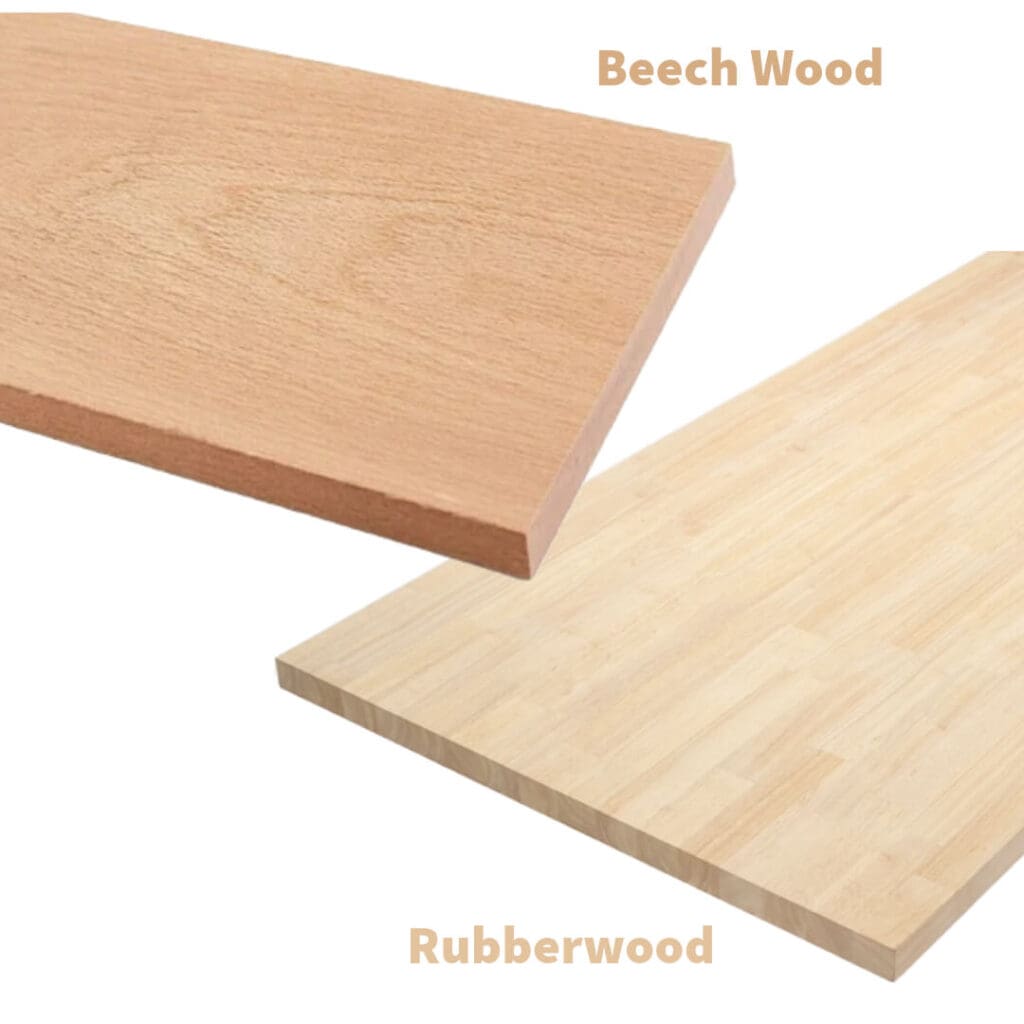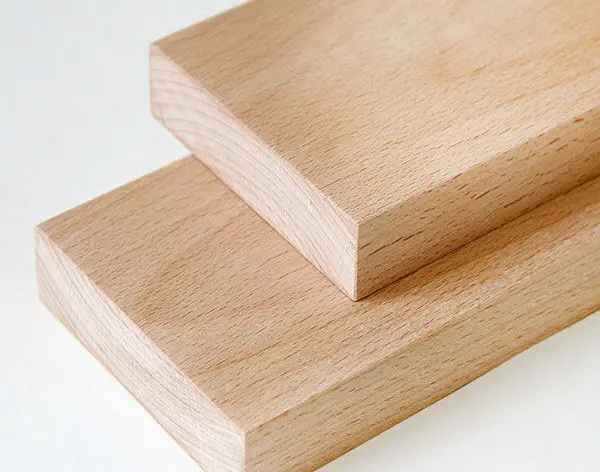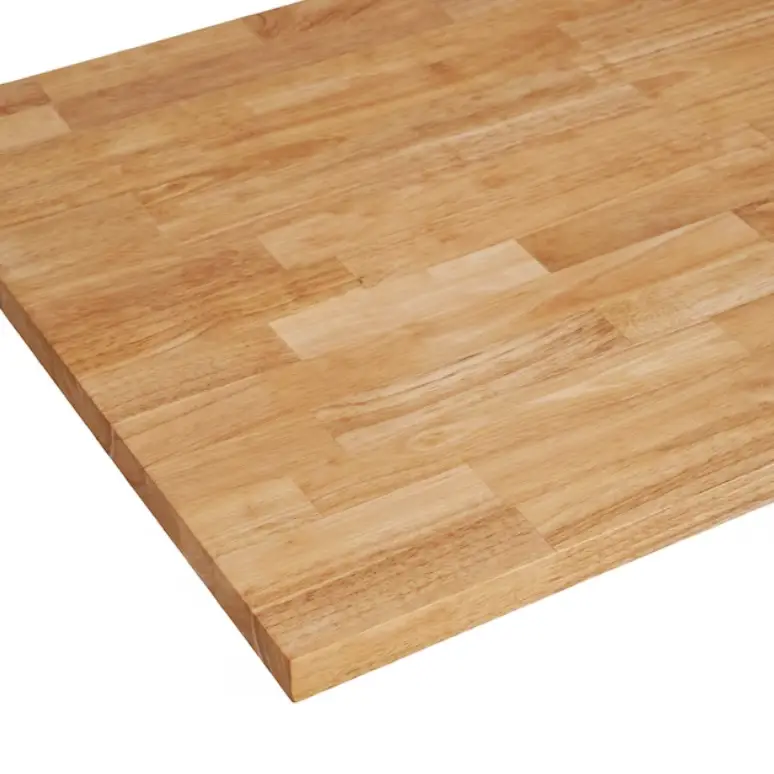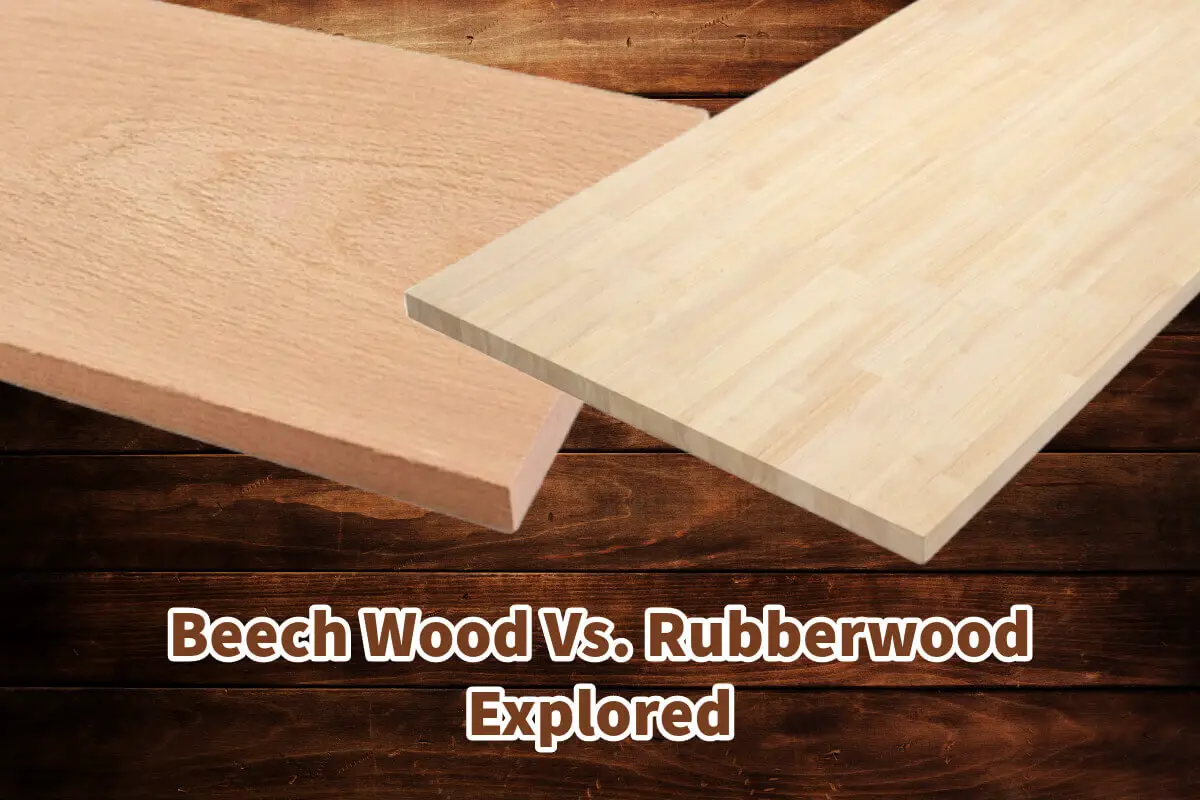When you look at Beechwood and Rubberwood, there are some similarities but some differences.
Beechwood and rubberwood are two distinct types of hardwoods commonly used in the furniture industry. Each has its unique characteristics, benefits, and uses. We will first define beechwood and rubberwood and then delve into ten points highlighting their properties, sustainability, and applications.
Table of Contents
What Is Beechwood?
Beechwood comes from the beech tree, the Fagus genus, which grows widely in Europe, Asia, and North America. This hardwood is highly valued for its fine grain, high crush strength, and impressive hardness.
Beechwood’s color ranges from a light cream to a medium tan, often with a pink or brown hue.

What Is Rubberwood?
Rubberwood, as discussed earlier, is derived from the Pará rubber tree (Hevea brasiliensis), primarily found in tropical regions of Asia. After about 25-30 years of producing latex, these trees are harvested for their wood, known for being eco-friendly and cost-effective.
Rubberwood has a pale cream to light brown color, with a straight grain and even texture.
Key Points For Beechwood And Rubberwood
Beechwood and rubberwood each possess distinct qualities that set them apart in woodworking and furniture design.
Now, let’s look at ten key points for each wood type:
Beechwood

- Durability: Beechwood is known for its high durability and strength, making it suitable for furniture that needs to withstand heavy use.
- Hardness: It’s one of the most complicated wood types and resists abrasions and indentation, ideal for flooring and work surfaces.
- Grain: The delicate, tight beechwood grain has an appealing, uniform, smooth, and visually attractive appearance.
- Workability: Despite its hardness, beechwood can be worked efficiently using hand tools and machinery, making it versatile for detailed work.
- Flexibility: It has a high shock resistance and can be steam-bent, making it useful for curved furniture designs such as chairs and decorative items.
- Finish: Beechwood accepts stains and finishes very well, which can enhance its natural hue or alter its color to match design preferences.
- Hygroscopic Nature: It tends to absorb moisture, which means it can expand or contract with changes in humidity and may not be ideal for outdoor use without proper treatment.
- Cost: Beechwood is generally more expensive than rubberwood, affecting its accessibility for budget-conscious consumers.
- Sustainability: While beech trees are abundant, the sustainability of beechwood can vary depending on the management of the forests from which it’s sourced.
- Uses: Beechwood is widely used to manufacture chairs, tables, flooring, kitchenware, and even musical instruments like pianos and drums due to its resonant properties.
Rubberwood

- Eco-Friendly: Rubberwood is considered an environmentally friendly wood since it uses plantation trees that have already served a purpose in producing latex.
- Economical: It is less expensive than many other hardwoods, which makes it a popular choice for affordable furniture manufacturing.
- Density: While rubberwood is a hardwood, it is on the lower end of the density scale compared to beechwood, making it lighter and easier to handle.
- Stainability: Rubberwood’s light natural color is a good base for stains and finishes, offering the flexibility to match various interior designs.
- Maintenance: It requires regular maintenance to avoid the risk of fungal and insect attacks, especially if not adequately kiln-dried and treated.
- Durability: Although rubberwood is durable, it is more susceptible to dents and scratches than hardwoods like beechwood.
- Dimensional Stability: Rubberwood has good dimensional stability that resists warping and shrinkage, which is essential for the longevity of furniture.
- Grain Uniformity: The uniform grain of rubberwood provides a smooth surface appealing to furniture and cabinetry.
- Sensitivity to Temperature: Rubberwood doesn’t fare well with extreme changes in temperature and humidity and is best used in climate-controlled environments.
- Uses: Rubberwood is commonly used in household furniture such as tables, chairs, and kitchen cabinets. It’s also used in butcher blocks due to its resistance to mold and mildew.
Consider the intended use, budget, and environmental impact when choosing between beechwood and rubberwood for a project or furniture piece. Beechwood’s strength and durability make it suitable for high-traffic areas and items needing to withstand significant wear and tear.
In contrast, rubberwood’s affordability and eco-friendliness are ideal for cost-effective furniture and those with a strong environmental ethos.
Both kinds of wood can be excellent choices, but the final decision should align with the use-case’s specific needs, considering factors such as durability, cost, sustainability, and aesthetic preferences. Whether you opt for the classic strength and fine grain of beechwood or the sustainable and versatile nature of rubberwood, both materials offer unique advantages that can be tailored to a wide range of furniture and design applications.
At Mondoro, we would love to help you decide which material would be best for manufacturing your home decor and furniture product.
Find out more about how Mondoro can help you create, develop, and manufacture excellent home decor and home furniture products – including lacquer furniture. Don’t hesitate to contact me, Anita. Check out my email by clicking here or become a part of our community and join our newsletter by clicking here.
Mondoro gives out a FREE Lookbook to anyone interested. You can receive a copy of our latest Lookbook by clicking here.
Listen to our Podcast called Global Trade Gal. You can find it on all major podcast platforms. Try out listening to one of our podcasts by clicking here.
Subscribe to our Mondoro Company Limited YouTube Channel filled with great videos and information by clicking here.
Related Content
10 Types of Grain Patterns of Solid Wood Furniture Explored
We will explore ten different types of grain patterns found in solid wood furniture, including Maple, Beech, Hickory, Oak, Teak, Pine, Rubberwood, Walnut, Douglas Fir, and Spruce. We will delve into the characteristics of each wood type and examine how their distinct grain patterns contribute to their suitability for furniture production.
You can discover more by reading 10 Types of Grain Patterns of Solid Wood Furniture Explored by clicking here.
Is Solid Wood Furniture Expensive? 3 Factors To Consider
Three main factors can significantly influence the furniture price if you choose solid wood. These factors include the type of wood used, the size of the furniture piece, and the construction techniques employed, all of which play a crucial role in determining the final cost. Read on as we explore each of these.
You can learn more by reading Is Solid Wood Furniture Expensive? 3 Factors To Consider by clicking here.
Why Is It So Hard To Find Solid Wood Furniture Manufacturers?
Locating trustworthy solid wood furniture manufacturers can be an intricate endeavor for retailers and wholesalers. The task’s complexity is rooted in many factors related to solid wood furniture’s production and manufacturing procedures. Read on as we explore the complex task of the search for solid wood furniture manufacturers and how Mondoro can help you.
You can learn more by reading our blog Why Is It So Hard To Find Solid Wood Furniture Manufacturers? by clicking here.


